Catrina, Mexican painted terracotta sculpture, 1950s
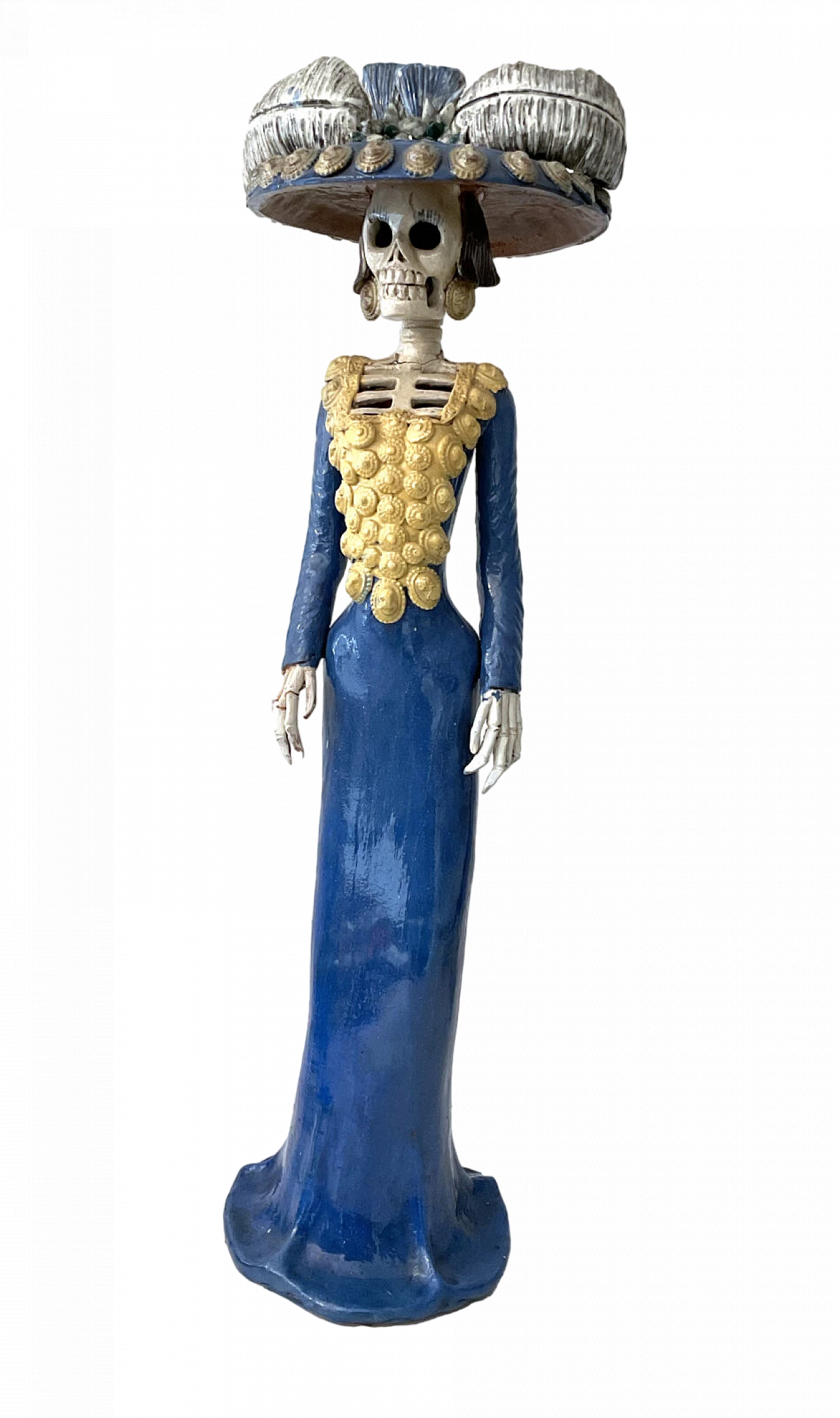
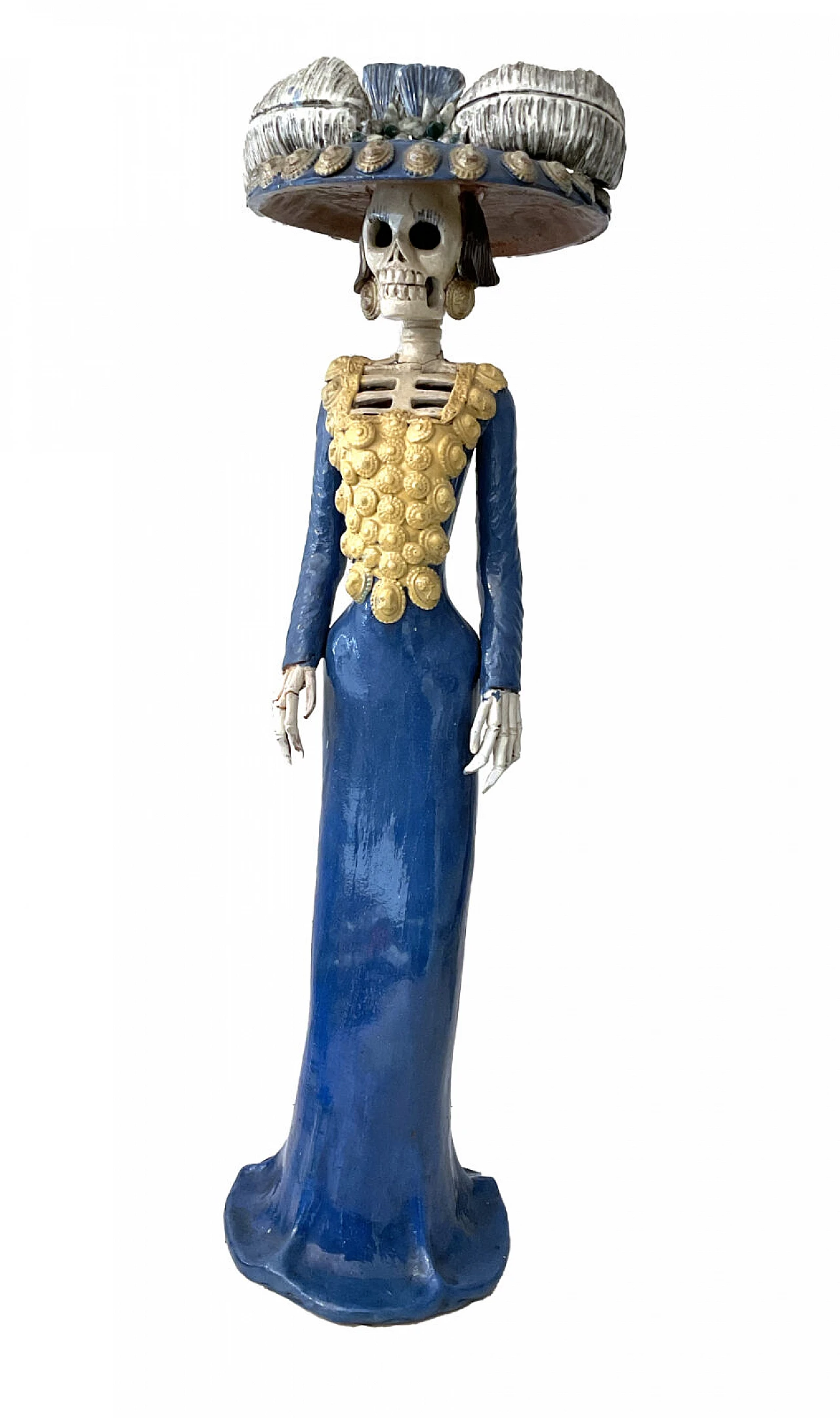
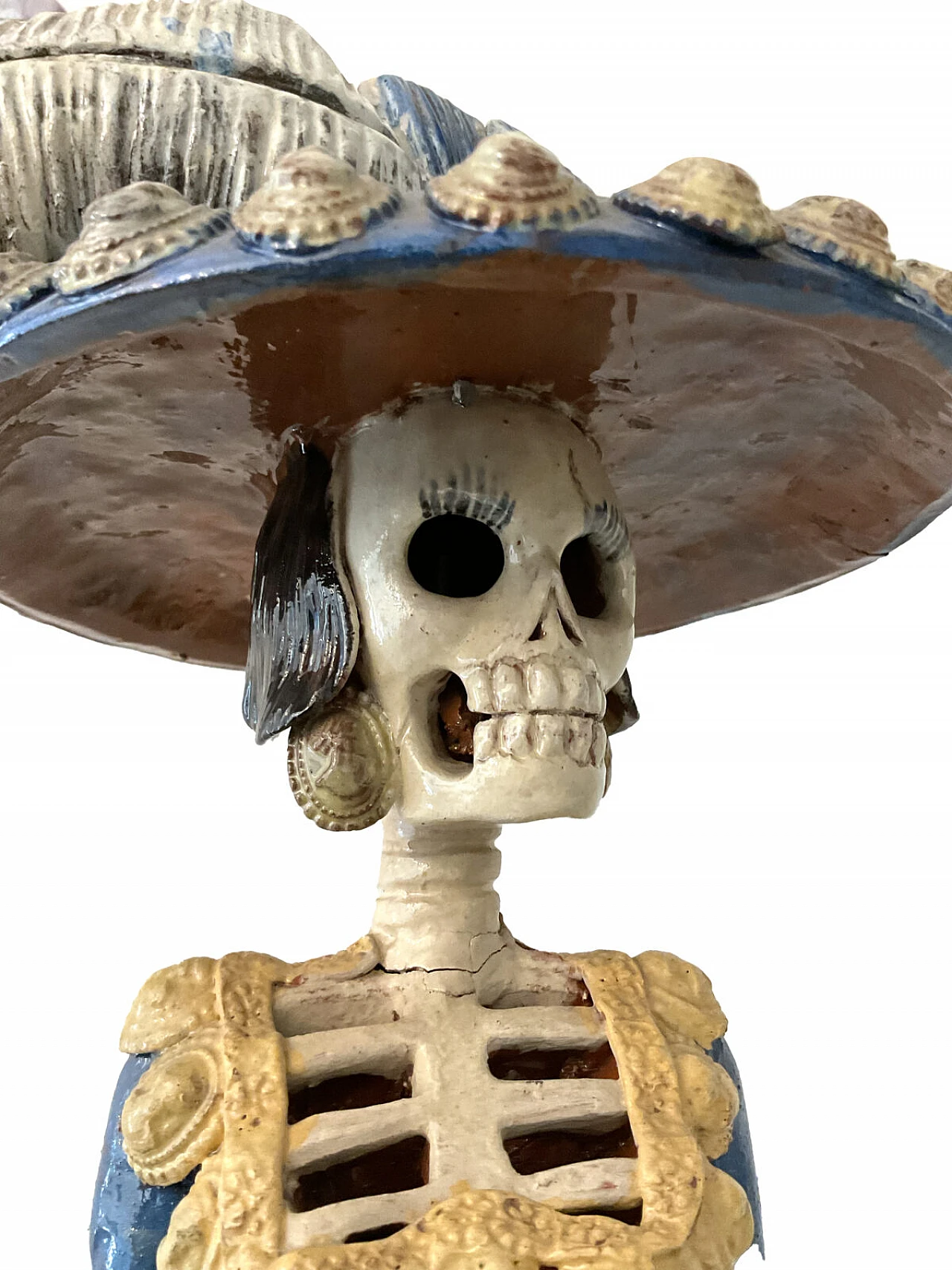
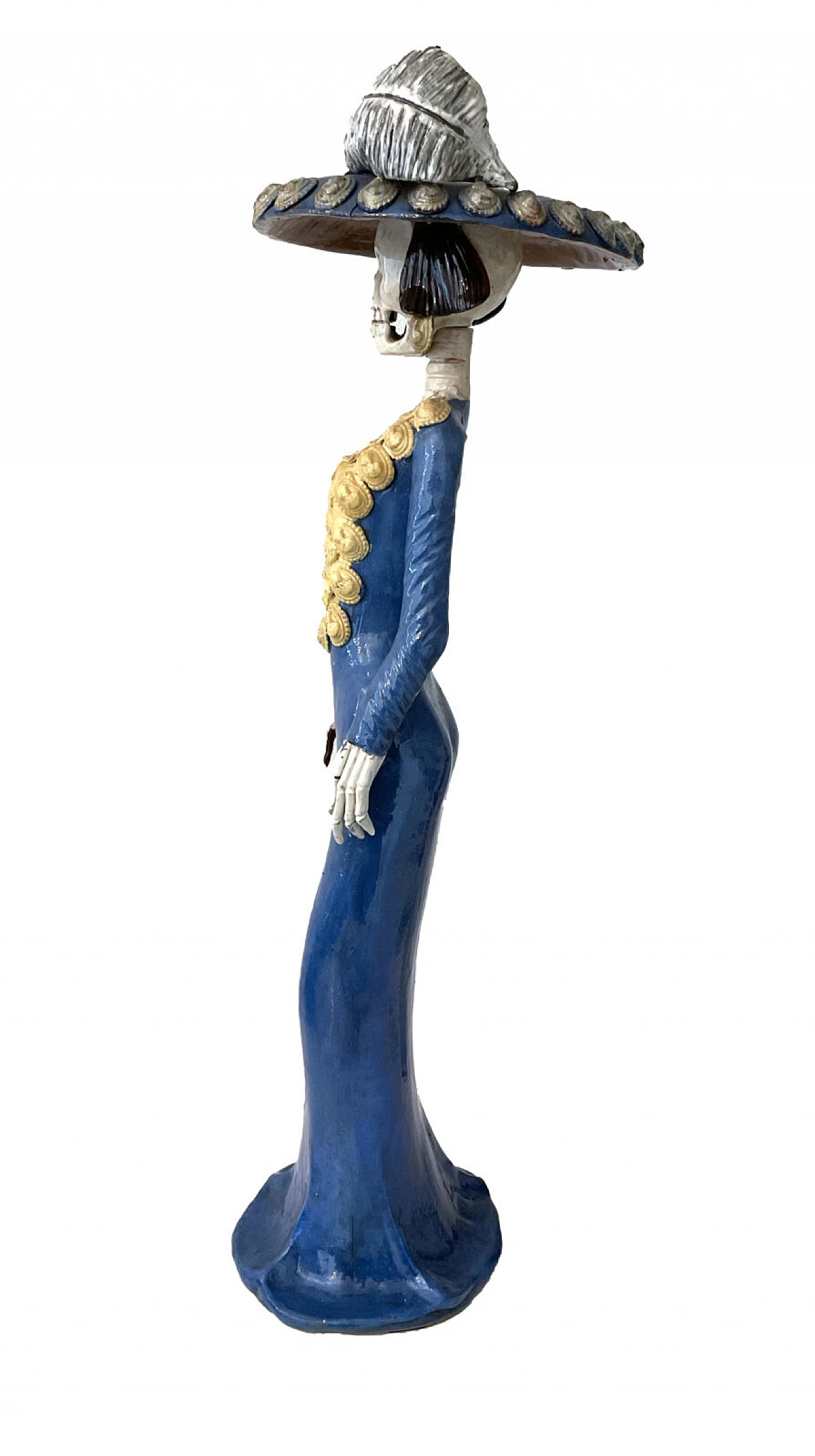
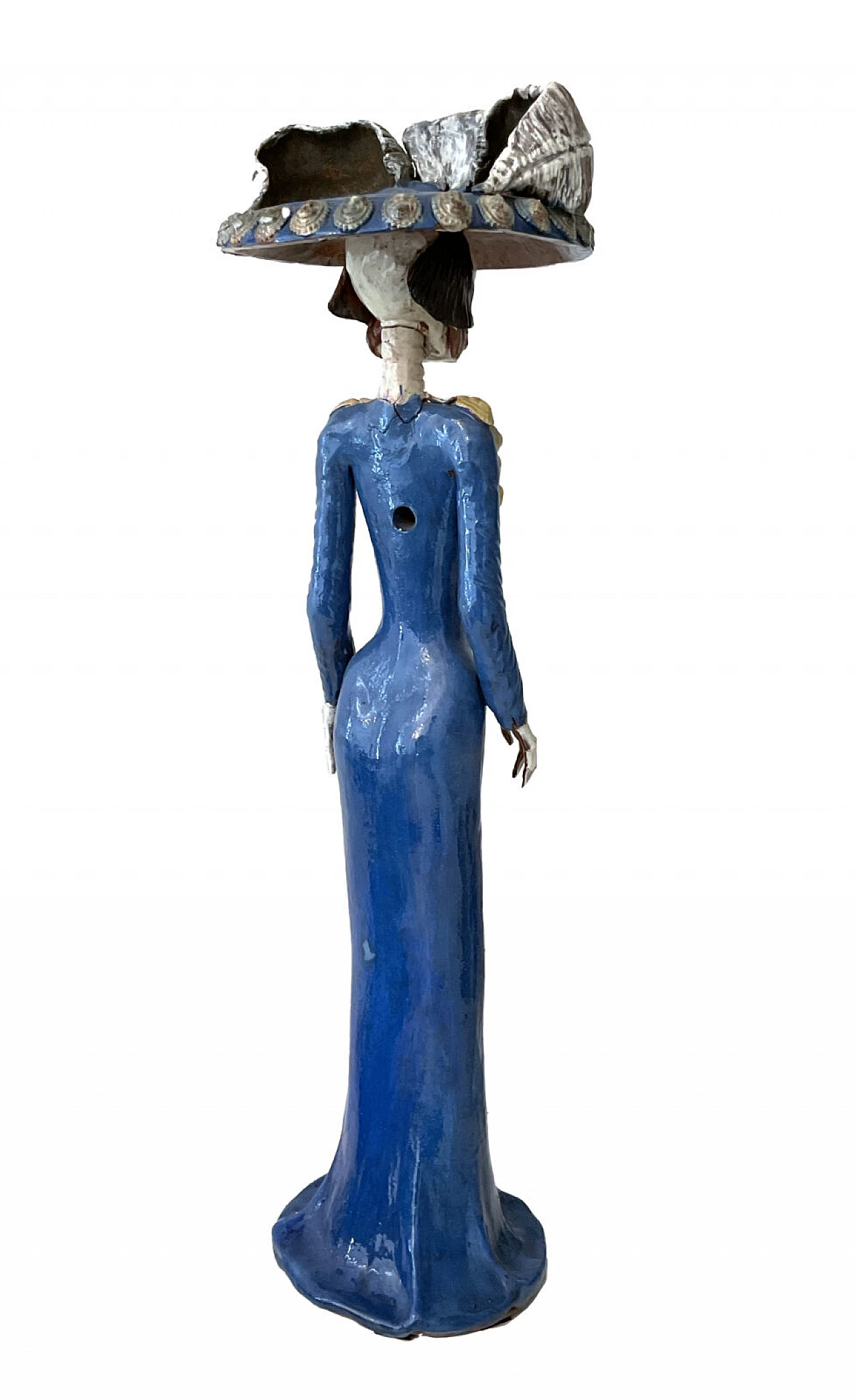
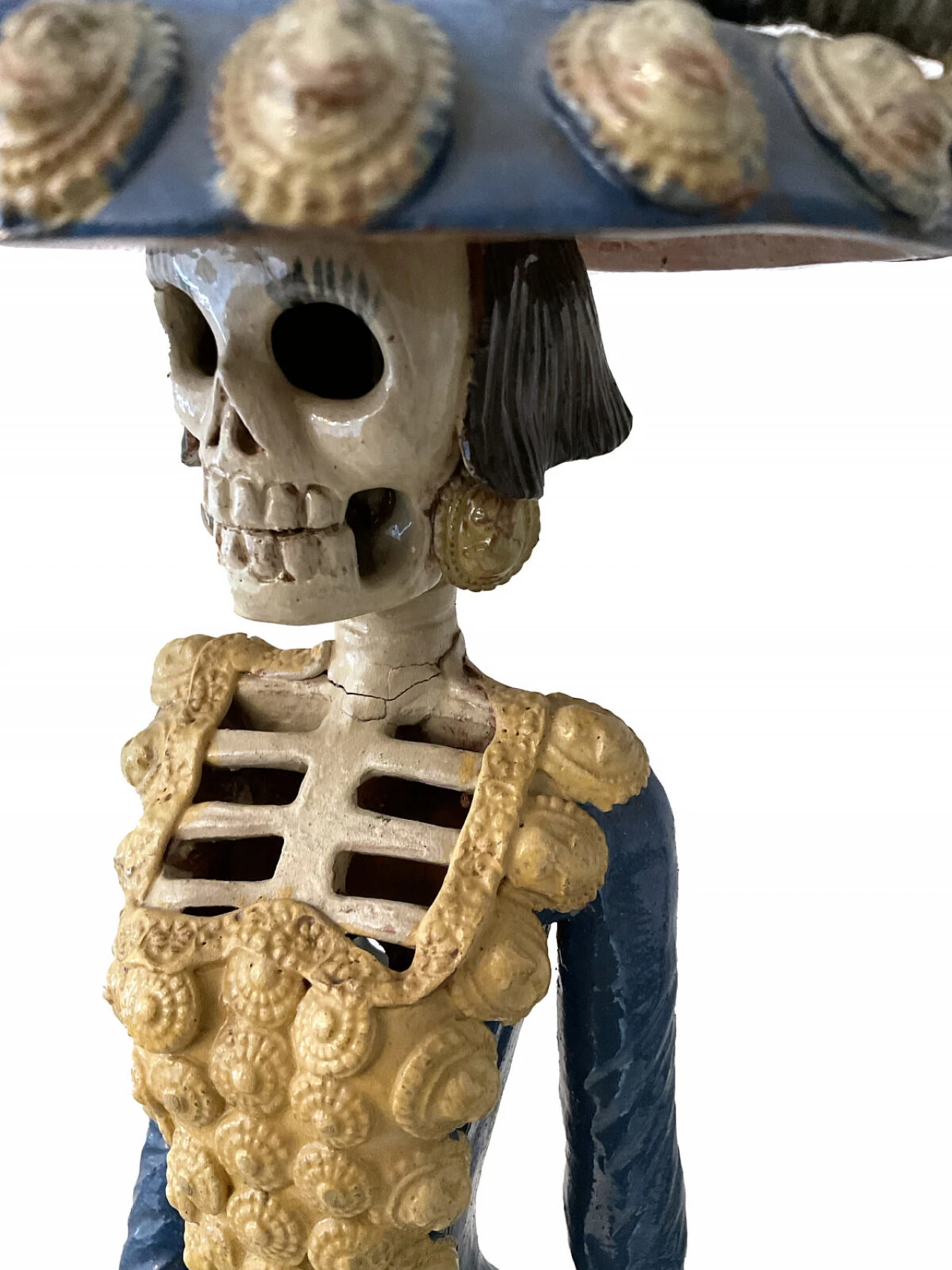
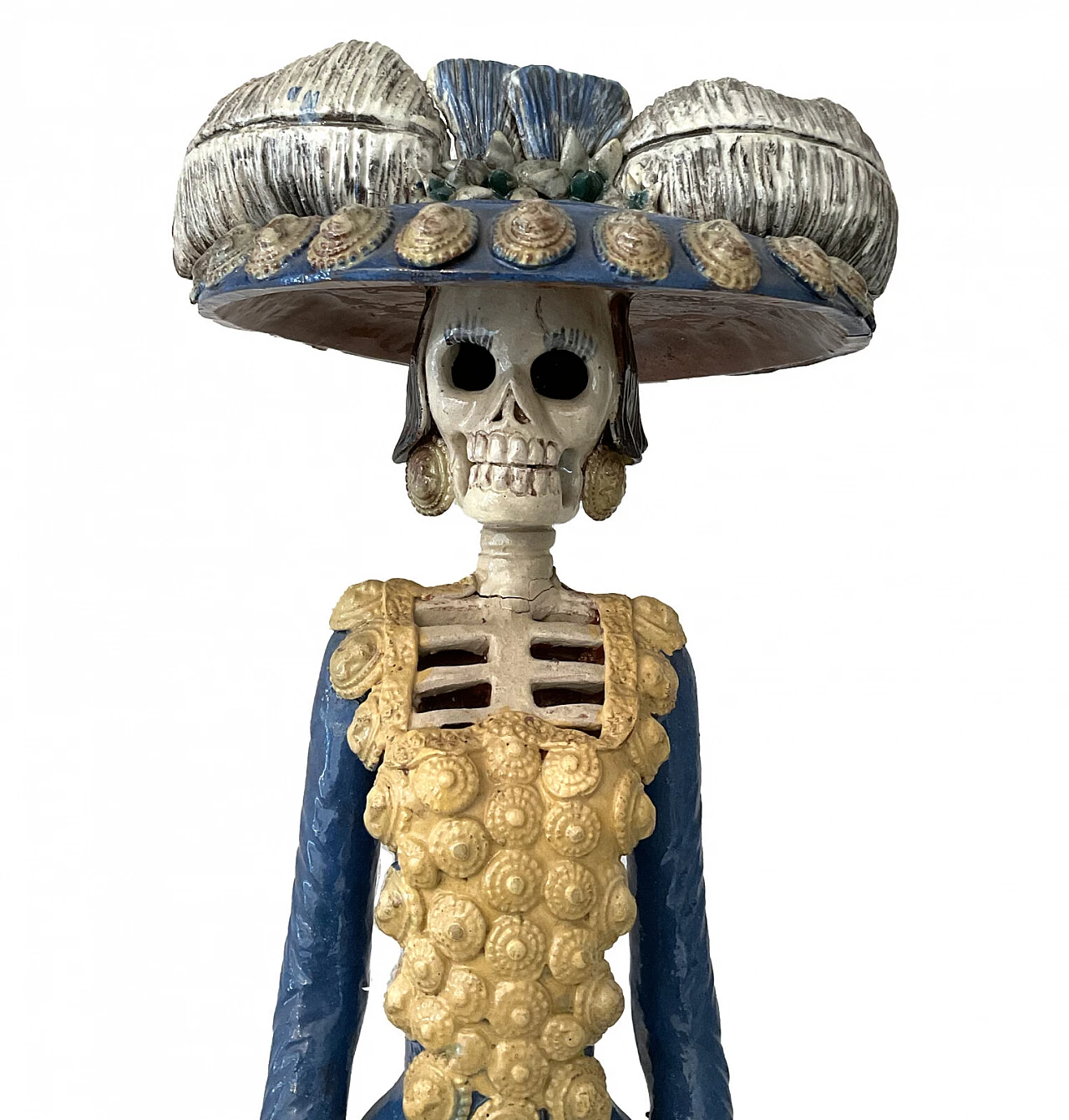







Catrina in polychrome painted terracotta made by a Mexican artist in the mid-20th century. This particular sculpture depicts the Catrina, also known as La Calavera Catrina, one of the icons of Mexican culture, particularly associated with the celebration of Dia de los Muertos (the Day of the Dead). An elegant figure, disguised as a skeleton, it has a rich and complex history dating back to Mexico's post-revolutionary period. Catrina was created by the Mexican artist José Guadalupe Posada at the beginning of the 20th century with the original name of Calavera Garbancea: a skeletal female figure, dressed in an elegant dress, wearing a tall hat and adorned with feathers. The evolution to the current iconography is partly due to the Mexican muralist Diego Rivera who painted a version of the Catrina in his famous mural completed in 1947, thus contributing to making her image popular and deeply rooted in Mexican culture. Today Catrina is one of the most recognizable symbols of Mexican culture. It embodies the Mexican notion of death as an inevitable part of life and celebrates the memory of the deceased in a colorful and festive way. Sculpture in good general condition with some small defects as highlighted by the photographs.
ID: 73557-1715172601-90195
